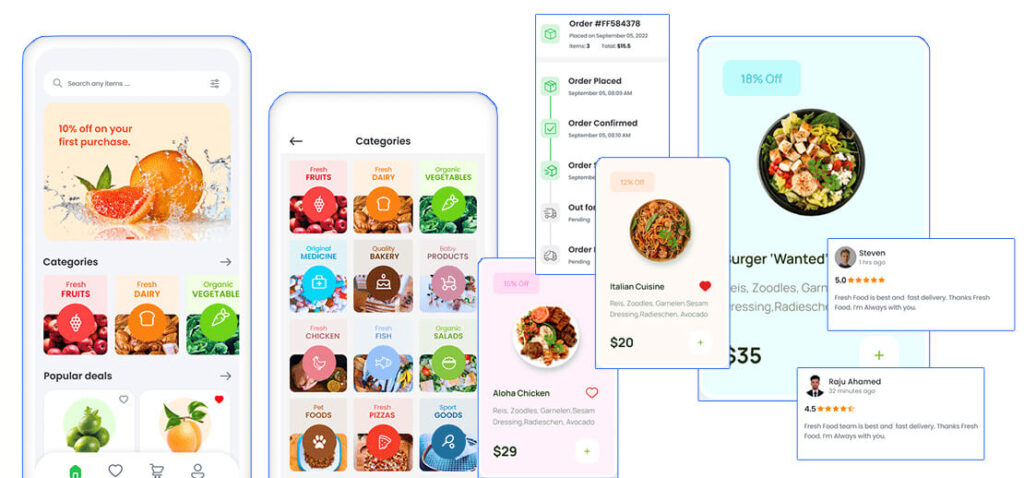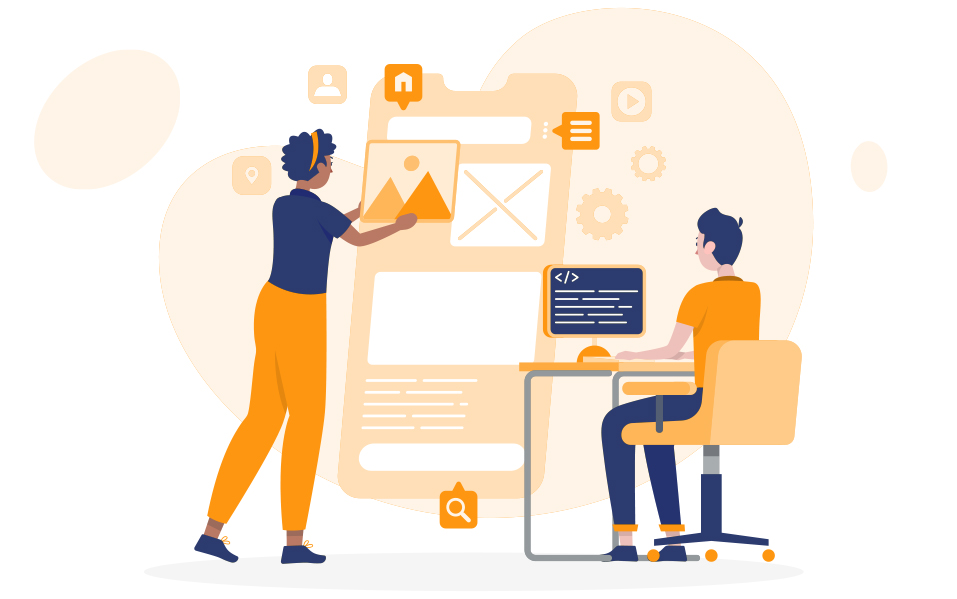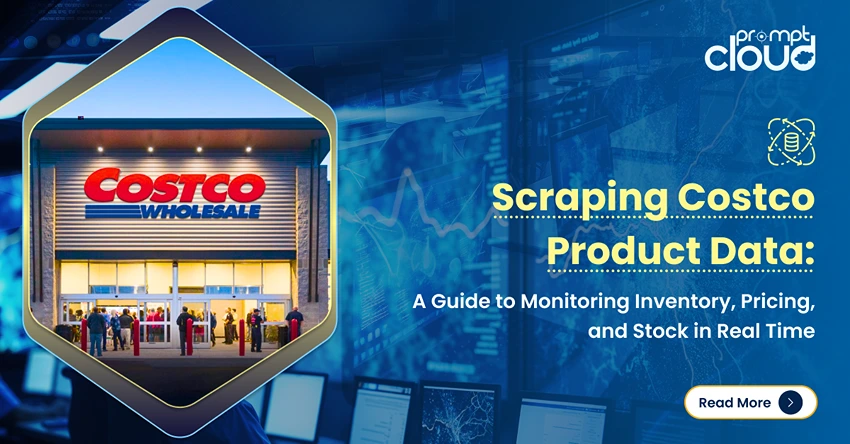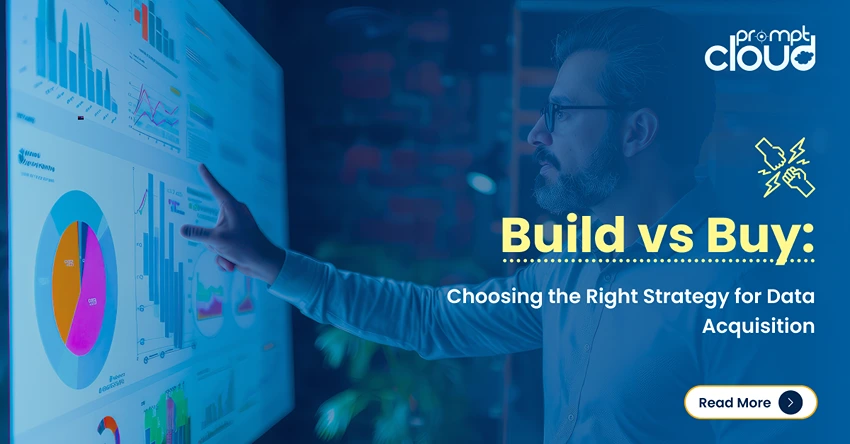
Consider how often you use mobile applications. It can be for purchasing goods or services, hailing a ride, or browsing through reviews. Now imagine the volume of invaluable data this app holds: pricing data, customer reviews, competitor profiles, and so on. For companies, having access to this data can provide powerful intelligence such as market trends, customer behaviors, and competitor moves.
This is where mobile app scraping comes in handy. It assists companies in collecting data from iOS and Android apps in the same manner as web scraping is performed on websites. Whether you are an eCommerce brand tracking competitors’ pricing or a market analyst studying the overall sentiment of the users, capturing app data will surely strengthen your business in the market.
What Is Mobile App Scraping?

Image Source: WebsiteScraper
Mobile app scraping is a type of web scraping that targets mobile applications instead of websites. Unlike traditional web scraping that aims to extract data from other websites, mobile app scraping employs a different set of tactics because the structure of mobile apps is different from that of websites.
Unlike websites, which have standard HTML pages, mobile applications use APIs (Application Programming Interfaces) to communicate. In mobile app data scraping, these API requests are either intercepted, or the procedure of taking apart an application to obtain the necessary information is employed.
Data Points You Can Extract from Mobile Apps
Businesses can extract various types of data from mobile apps, including:
- Product Insights: Dive into prices, captivating descriptions, and stock status.
- User Feedback: Discover customer sentiments with glowing reviews and honest ratings.
- Competitive Edge: Stay informed on promotions, tantalizing discounts, and rival campaigns.
- Live Metrics: Access real-time prices and stock quantities at your fingertips.
For example, an online shopping business can scrape competitor apps to track real-time price changes, and a market research agency can scrape sentiments on multiple app platforms to analyze the general sentiment of users.
Why is Mobile App Scraping Important for Businesses?
Mobile applications have made it easier and are preferred by consumers to engage with brands, shop, and obtain services. As a result, the businesses that extract and analyze this data have an extreme competitive advantage. Here are some of the ways businesses use mobile app scraping to increase success.
- Market Research:
Every business sector has its competition. Businesses need to understand and monitor the market closely to identify the next business opportunity. Through mobile app scraping, a business can obtain product data, customer behaviors, and sales Data. For instance, a fashion retailer can combine data from several shopping apps to determine which styles are dominant and edit their inventory.
- Tracking Your Competition:
Tracking competitor mobile apps is extremely important in every industry. Businesses track changes in pricing, new products, and promotional activities in real-time, especially for e-commerce businesses that may be forced to retract their prices based on competitors. With competitor mobile app scraping, tracking updates becomes effortless.
- Customer Experience:
The current market makes heavy use of personalization for gaining customer loyalty and retention. By studying user engagement and feedback from mobile apps, businesses can adjust product suggestions, improve customer service, and refresh marketing initiatives.
For example, a food delivery service can look at competitor applications to analyze which items are frequently purchased and improve their offerings.
Industries like e-commerce, travel, food delivery, and ride-sharing all benefit from scraping mobile apps to refine their business strategies and enhance customer engagement.
How Is Data Extracted from Mobile Apps?

Image Source: AndroTech Solutions
Extracting data from mobile applications is a multi-step process that requires a fair deal of skill and the correct tools. Here’s a step-by-step guide on how mobile app scraping functions.
1. Analyzing APIs through Reverse Engineering
Network requests made by the app to the backend servers are normally pulled via APIs in most mobile applications. Proxy tools can be used to intercept these network requests and determine the movement of information between the app and its server.
2. Automation Methods To Extract Data
Once the API behavior is known, data extraction takes place using automation tools for UI action, or data capturing tools like Scrapy or Beautifulsoup. The use of Python for scraping mobile applications is quite common due to its versatility and powerful libraries.
3. Storage and Analysis of Data
The information that is extracted is processed and stored in either databases or cloud storage. This data can later be analyzed using some business intelligence tools or AI models, depending on what business value needs to be captured.
The steps involved in the scraping process are slightly different for applications running on Android compared to those running on iOS. Let’s explore further.
Guide on Extracting Data from Android Apps
In general Android applications are easier to scrape because they are more flexible in granting access to information. This is how scraping of Android apps works:
- Identifying API Calls
Most Android applications are designed to communicate with their backend via APIs. Using Burp Suite, Wireshark, and MitmProxy, these API calls can be intercepted for developers to figure out how APIs are populated.
- Decompiling APK File
When API calls are hidden or encrypted, the app can be reverse-engineered by decompiling its APK. Analyzing the APK is done through a technique that uses tools like JADX or APKTool that allows developers to code and discover hardcoded API endpoints and pull data.
- Automating UI Interactions
For applications that do not provide functional APIs, UI automation tools such as Selenium are capable of mimicking user actions to extract information from an application’s interface.
- Data Extraction Using ADB
With Android Devices, the Android Debug Bridge (ADB) helps a developer to communicate with individual applications to pull data without using APIs at all.
Problems in Scraping Android Applications
• Encryption & Obfuscation: Some applications have an encrypted API response, and scraping the data becomes impossible.
• CAPTCHA & Anti-Scraping Measures: A lot of applications have automated bot prevention systems in place to thwart automated scraping.
• Frequent Application Updates: With newer versions of an application being released, the API is likely to change, which means the scraping scripts will need to adapt constantly.
Even with these problems, scraping Android apps is a common practice for competitor evaluations, price tracking, market research, and business intelligence.
Guide on Extracting Data from iOS Applications
Apple’s security policies make it harder to scrape iOS applications. Nevertheless, scraping is possible with some sophisticated skills.
- Intercepting API Interactions
Just like Android, IOS applications use APIs to pull data as well. Tools such as Charles Proxy and Wireshark can be used to capture the API requests, which enables an understanding of the data flow.
- Jailbreaking the Device (Advanced Users)
It can be more difficult to access app files and data on a device running on iOS. Attempting to gain deeper access such as through jailbreaking can be done but for a hefty price in risks and legals. This method is not recommended for commercial use.
- UI Automation
For apps without accessible APIs, Appium can automate data retrieval from an app’s UI through interactions on an iOS emulator or device.
- Inspecting iOS Application Bundles
Tools like Frida and Objection let developers inspect an app’s backend for communication which makes certain pieces of information retrievable from an iOS app’s bundle.
Obstacles in Scraping iOS Applications
- Stricter Security: iOS devices have more overall restrictions than Android devices.
- SSL Pinning: Several applications utilize SSL pinning which makes it impossible to intercept network traffic.
- No Equivalent of APK: There is no publicly available package format in which iOS applications can be put for easy decompilation, unlike Android.
Since scraping iOS apps is technically complex, businesses often rely on mobile app scraping services to navigate these challenges effectively.
Benefits of Mobile App Scraping for E-Commerce & App-Centric Companies

Image Source: WebsiteScraper
Mobile app scraping provides invaluable information that aids in decision-making and strategic planning. For several reasons, it is unlike anything else:
• Access Smarter Information With Real-Time Data
The market is constantly changing and businesses require timely data to make the right decisions. Automated mobile app scraping offers real-time information on pricing, inventories, and user reviews; therefore, helping companies be at the forefront of any market changes.
• Advanced Competitor Analysis And Strategic Market Positioning
Knowing what competitors are doing is riveting information to stay ahead of the competition. Automated mobile app scraping services allow companies to follow competitors’ pricing, marketing campaigns, and new product introductions, making it easy for them to make the necessary changes in their plans.
• Enhanced Target Audience Insight For Efficient Customer Engagement
With mobile apps, businesses can use advanced app activity data to understand how customers make purchasing decisions, aiding marketers to improve customer relations and engagement as well as develop more targeted marketing campaigns.
For non-technical mobile app data users, automated mobile app scraping services provide a cost-effective method to capture and utilize mobile app data with ease.
Step-by-Step Guide to Extracting Data from Mobile Apps
Before a business can adopt mobile app scraping, it needs to formulate a strategy first. The following steps could help:
• Decide on the Type of Mobile Data Needed and the Apps to Scrape
Establish what app data is of the most interest, such as product pricing information, customer feedback, or other competitor data. Identify the mobile apps that hold that specific data.
• Select the Most Suitable Tool or Mobile App Scraping Service
Mobile app scraping for companies with high levels of technical capabilities could use Python with Scrapy, Selenium, and Appium. For those lacking the needed in-house expertise, mobile app scraping services can provide compliant and precise data extraction.
• Reviewing Compliance with Legal Requirements & Ethical Considerations
Always read the terms of service of the app before you scrape any content, and be sure to comply with the protection policies to stay out of trouble legally.
By following these guidelines, a business can strategically incorporate mobile app data scraping into its operations and work towards gaining key insights that better company performance.
Conclusion
Mobile app scraping has vast capabilities that can greatly benefit a business, improving its operations. From market analytics and monitoring competition to personalization and customer insights, the possibilities are endless.Nonetheless, following legal and ethical practices is important while mobile app scraping. Partnering with a professional mobile app scraping service guarantees compliance while helping you extract valuable insights to meet your needs. So, are you ready to unlock the hidden potential of mobile app data? Our experts are ready to assist you- Schedule a demo today!



















